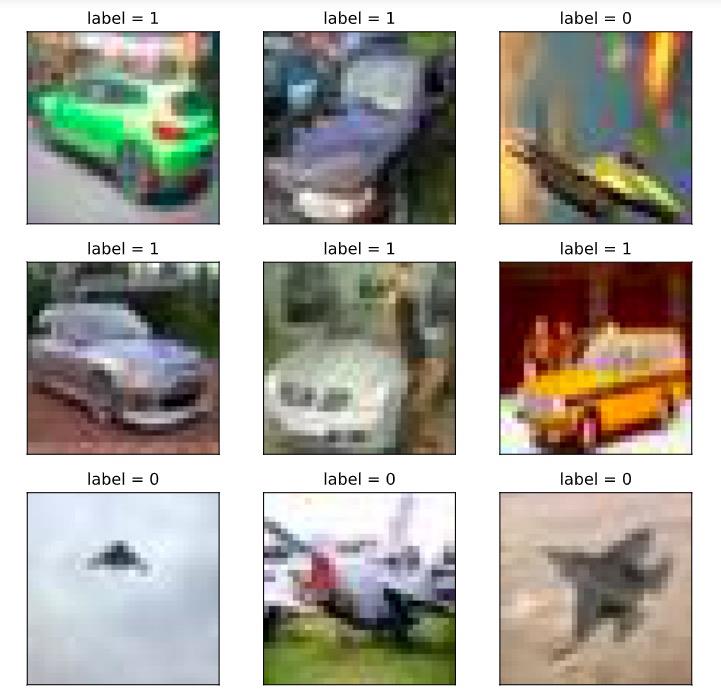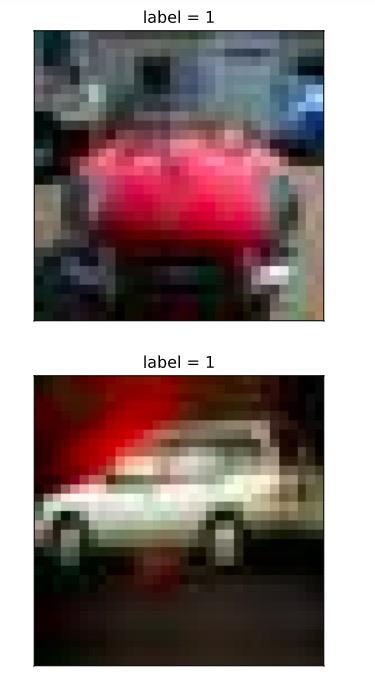《30天吃掉那只 TensorFlow2.0》 5-1 数据管道Dataset
Posted 风信子的猫Redamancy
tags:
篇首语:本文由小常识网(cha138.com)小编为大家整理,主要介绍了《30天吃掉那只 TensorFlow2.0》 5-1 数据管道Dataset相关的知识,希望对你有一定的参考价值。
《30天吃掉那只 TensorFlow2.0》 5-1 数据管道Dataset
文章目录

如果需要训练的数据大小不大,例如不到1G,那么可以直接全部读入内存中进行训练,这样一般效率最高。
但如果需要训练的数据很大,例如超过10G,无法一次载入内存,那么通常需要在训练的过程中分批逐渐读入。
使用 tf.data API 可以构建数据输入管道,轻松处理大量的数据,不同的数据格式,以及不同的数据转换。
一,构建数据管道
可以从 Numpy array, Pandas DataFrame, Python generator, csv文件, 文本文件, 文件路径, tfrecords文件等方式构建数据管道。
其中通过Numpy array, Pandas DataFrame, 文件路径构建数据管道是最常用的方法。
通过tfrecords文件方式构建数据管道较为复杂,需要对样本构建tf.Example后压缩成字符串写到tfrecords文件,读取后再解析成tf.Example。
但tfrecords文件的优点是压缩后文件较小,便于网络传播,加载速度较快。
1,从Numpy array构建数据管道
# 从Numpy array构建数据管道
import tensorflow as tf
import numpy as np
from sklearn import datasets
iris = datasets.load_iris()
ds1 = tf.data.Dataset.from_tensor_slices((iris["data"],iris["target"]))
for features,label in ds1.take(5):
print(features,label)
tf.Tensor([5.1 3.5 1.4 0.2], shape=(4,), dtype=float64) tf.Tensor(0, shape=(), dtype=int64)
tf.Tensor([4.9 3. 1.4 0.2], shape=(4,), dtype=float64) tf.Tensor(0, shape=(), dtype=int64)
tf.Tensor([4.7 3.2 1.3 0.2], shape=(4,), dtype=float64) tf.Tensor(0, shape=(), dtype=int64)
tf.Tensor([4.6 3.1 1.5 0.2], shape=(4,), dtype=float64) tf.Tensor(0, shape=(), dtype=int64)
tf.Tensor([5. 3.6 1.4 0.2], shape=(4,), dtype=float64) tf.Tensor(0, shape=(), dtype=int64)
2,从 Pandas DataFrame构建数据管道
# 从 Pandas DataFrame构建数据管道
import tensorflow as tf
from sklearn import datasets
import pandas as pd
iris = datasets.load_iris()
dfiris = pd.DataFrame(iris["data"],columns = iris.feature_names)
ds2 = tf.data.Dataset.from_tensor_slices((dfiris.to_dict("list"),iris["target"]))
for features,label in ds2.take(3):
print(features,label)
'sepal length (cm)': <tf.Tensor: shape=(), dtype=float32, numpy=5.1>, 'sepal width (cm)': <tf.Tensor: shape=(), dtype=float32, numpy=3.5>, 'petal length (cm)': <tf.Tensor: shape=(), dtype=float32, numpy=1.4>, 'petal width (cm)': <tf.Tensor: shape=(), dtype=float32, numpy=0.2> tf.Tensor(0, shape=(), dtype=int64)
'sepal length (cm)': <tf.Tensor: shape=(), dtype=float32, numpy=4.9>, 'sepal width (cm)': <tf.Tensor: shape=(), dtype=float32, numpy=3.0>, 'petal length (cm)': <tf.Tensor: shape=(), dtype=float32, numpy=1.4>, 'petal width (cm)': <tf.Tensor: shape=(), dtype=float32, numpy=0.2> tf.Tensor(0, shape=(), dtype=int64)
'sepal length (cm)': <tf.Tensor: shape=(), dtype=float32, numpy=4.7>, 'sepal width (cm)': <tf.Tensor: shape=(), dtype=float32, numpy=3.2>, 'petal length (cm)': <tf.Tensor: shape=(), dtype=float32, numpy=1.3>, 'petal width (cm)': <tf.Tensor: shape=(), dtype=float32, numpy=0.2> tf.Tensor(0, shape=(), dtype=int64)
3,从Python generator构建数据管道
# 从Python generator构建数据管道
import tensorflow as tf
from matplotlib import pyplot as plt
from tensorflow.keras.preprocessing.image import ImageDataGenerator
# 定义一个从文件中读取图片的generator
image_generator = ImageDataGenerator(rescale=1.0/255).flow_from_directory(
"./data/cifar2/test/",
target_size=(32, 32),
batch_size=20,
class_mode='binary')
classdict = image_generator.class_indices
print(classdict)
def generator():
for features,label in image_generator:
yield (features,label)
ds3 = tf.data.Dataset.from_generator(generator,output_types=(tf.float32,tf.int32))
%matplotlib inline
%config InlineBackend.figure_format = 'svg'
plt.figure(figsize=(6,6))
for i,(img,label) in enumerate(ds3.unbatch().take(9)):
ax=plt.subplot(3,3,i+1)
ax.imshow(img.numpy())
ax.set_title("label = %d"%label)
ax.set_xticks([])
ax.set_yticks([])
plt.show()

4,从csv文件构建数据管道
# 从csv文件构建数据管道
ds4 = tf.data.experimental.make_csv_dataset(
file_pattern = ["./data/titanic/train.csv","./data/titanic/test.csv"],
batch_size=3,
label_name="Survived",
na_value="",
num_epochs=1,
ignore_errors=True)
for data,label in ds4.take(2):
print(data,label)
OrderedDict([('PassengerId', <tf.Tensor: shape=(3,), dtype=int32, numpy=array([540, 58, 764], dtype=int32)>), ('Pclass', <tf.Tensor: shape=(3,), dtype=int32, numpy=array([1, 3, 1], dtype=int32)>), ('Name', <tf.Tensor: shape=(3,), dtype=string, numpy=
array([b'Frolicher, Miss. Hedwig Margaritha', b'Novel, Mr. Mansouer',
b'Carter, Mrs. William Ernest (Lucile Polk)'], dtype=object)>), ('Sex', <tf.Tensor: shape=(3,), dtype=string, numpy=array([b'female', b'male', b'female'], dtype=object)>), ('Age', <tf.Tensor: shape=(3,), dtype=float32, numpy=array([22. , 28.5, 36. ], dtype=float32)>), ('SibSp', <tf.Tensor: shape=(3,), dtype=int32, numpy=array([0, 0, 1], dtype=int32)>), ('Parch', <tf.Tensor: shape=(3,), dtype=int32, numpy=array([2, 0, 2], dtype=int32)>), ('Ticket', <tf.Tensor: shape=(3,), dtype=string, numpy=array([b'13568', b'2697', b'113760'], dtype=object)>), ('Fare', <tf.Tensor: shape=(3,), dtype=float32, numpy=array([ 49.5 , 7.2292, 120. ], dtype=float32)>), ('Cabin', <tf.Tensor: shape=(3,), dtype=string, numpy=array([b'B39', b'', b'B96 B98'], dtype=object)>), ('Embarked', <tf.Tensor: shape=(3,), dtype=string, numpy=array([b'C', b'C', b'S'], dtype=object)>)]) tf.Tensor([1 0 1], shape=(3,), dtype=int32)
OrderedDict([('PassengerId', <tf.Tensor: shape=(3,), dtype=int32, numpy=array([845, 66, 390], dtype=int32)>), ('Pclass', <tf.Tensor: shape=(3,), dtype=int32, numpy=array([3, 3, 2], dtype=int32)>), ('Name', <tf.Tensor: shape=(3,), dtype=string, numpy=
array([b'Culumovic, Mr. Jeso', b'Moubarek, Master. Gerios',
b'Lehmann, Miss. Bertha'], dtype=object)>), ('Sex', <tf.Tensor: shape=(3,), dtype=string, numpy=array([b'male', b'male', b'female'], dtype=object)>), ('Age', <tf.Tensor: shape=(3,), dtype=float32, numpy=array([17., 0., 17.], dtype=float32)>), ('SibSp', <tf.Tensor: shape=(3,), dtype=int32, numpy=array([0, 1, 0], dtype=int32)>), ('Parch', <tf.Tensor: shape=(3,), dtype=int32, numpy=array([0, 1, 0], dtype=int32)>), ('Ticket', <tf.Tensor: shape=(3,), dtype=string, numpy=array([b'315090', b'2661', b'SC 1748'], dtype=object)>), ('Fare', <tf.Tensor: shape=(3,), dtype=float32, numpy=array([ 8.6625, 15.2458, 12. ], dtype=float32)>), ('Cabin', <tf.Tensor: shape=(3,), dtype=string, numpy=array([b'', b'', b''], dtype=object)>), ('Embarked', <tf.Tensor: shape=(3,), dtype=string, numpy=array([b'S', b'C', b'C'], dtype=object)>)]) tf.Tensor([0 1 1], shape=(3,), dtype=int32)
5,从文本文件构建数据管道
# 从文本文件构建数据管道
ds5 = tf.data.TextLineDataset(
filenames = ["./data/titanic/train.csv","./data/titanic/test.csv"]
).skip(1) #略去第一行header
for line in ds5.take(5):
print(line)
tf.Tensor(b'493,0,1,"Molson, Mr. Harry Markland",male,55.0,0,0,113787,30.5,C30,S', shape=(), dtype=string)
tf.Tensor(b'53,1,1,"Harper, Mrs. Henry Sleeper (Myna Haxtun)",female,49.0,1,0,PC 17572,76.7292,D33,C', shape=(), dtype=string)
tf.Tensor(b'388,1,2,"Buss, Miss. Kate",female,36.0,0,0,27849,13.0,,S', shape=(), dtype=string)
tf.Tensor(b'192,0,2,"Carbines, Mr. William",male,19.0,0,0,28424,13.0,,S', shape=(), dtype=string)
tf.Tensor(b'687,0,3,"Panula, Mr. Jaako Arnold",male,14.0,4,1,3101295,39.6875,,S', shape=(), dtype=string)
6,从文件路径构建数据管道
ds6 = tf.data.Dataset.list_files("./data/cifar2/train/*/*.jpg")
for file in ds6.take(5):
print(file)
tf.Tensor(b'./data/cifar2/train/automobile/1263.jpg', shape=(), dtype=string)
tf.Tensor(b'./data/cifar2/train/airplane/2837.jpg', shape=(), dtype=string)
tf.Tensor(b'./data/cifar2/train/airplane/4264.jpg', shape=(), dtype=string)
tf.Tensor(b'./data/cifar2/train/automobile/4241.jpg', shape=(), dtype=string)
tf.Tensor(b'./data/cifar2/train/automobile/192.jpg', shape=(), dtype=string)
from matplotlib import pyplot as plt
def load_image(img_path,size = (32,32)):
label = 1 if tf.strings.regex_full_match(img_path,".*/automobile/.*") else 0
img = tf.io.read_file(img_path)
img = tf.image.decode_jpeg(img) #注意此处为jpeg格式
img = tf.image.resize(img,size)
return(img,label)
%matplotlib inline
%config InlineBackend.figure_format = 'svg'
for i,(img,label) in enumerate(ds6.map(load_image).take(2)):
plt.figure(i)
plt.imshow((img/255.0).numpy())
plt.title("label = %d"%label)
plt.xticks([])
plt.yticks([])

7,从tfrecords文件构建数据管道
import os
import numpy as np
# inpath:原始数据路径 outpath:TFRecord文件输出路径
def create_tfrecords(inpath,outpath):
writer = tf.io.TFRecordWriter(outpath)
dirs = os.listdir(inpath)
for index, name in enumerate(dirs):
class_path = inpath +"/"+ name+"/"
for img_name in os.listdir(class_path):
img_path = class_path + img_name
img = tf.io.read_file(img_path)
#img = tf.image.decode_image(img)
#img = tf.image.encode_jpeg(img) #统一成jpeg格式压缩
example = tf.train.Example(
features=tf.train.Features(feature=
'label': tf.train.Feature(int64_list=tf.train.Int64List(value=[index])),
'img_raw': tf.train.Feature(bytes_list=tf.train.BytesList(value=[img.numpy()]))
))
writer.write(example.SerializeToString())
writer.close()
create_tfrecords("./data/cifar2/test/","./data/cifar2_test.tfrecords/")
from matplotlib import pyplot as plt
def parse_example(proto):
description = 'img_raw' : tf.io.FixedLenFeature([], tf.string),
'label': tf.io.FixedLenFeature([], tf.int64)
example = tf.io.parse_single_example(proto, description)
img = tf.image.decode_jpeg(example["img_raw"]) #注意此处为jpeg格式
img = tf.image.resize(img, (32,32))
label = example["label"]
return(img,label)
ds7 = tf.data.TFRecordDataset("./data/cifar2_test.tfrecords").map(parse_example).shuffle(3000)
%matplotlib inline
%config InlineBackend.figure_format = 'svg'
plt.figure(figsize=(6,6))
for i,(img,label) in enumerate(ds7.take(9)):
ax=plt.subplot(3,3,i+1)
ax.imshow((img/255.0).numpy())
ax.set_title("label = %d"%label)
ax.set_xticks([])
ax.set_yticks([])
plt.show()

二,应用数据转换
Dataset数据结构应用非常灵活,因为它本质上是一个Sequece序列,其每个元素可以是各种类型,例如可以是张量,列表,字典,也可以是Dataset。
Dataset包含了非常丰富的数据转换功能。
-
map: 将转换函数映射到数据集每一个元素。
-
flat_map: 将转换函数映射到数据集的每一个元素,并将嵌套的Dataset压平。
-
interleave: 效果类似flat_map,但可以将不同来源的数据夹在一起。
-
filter: 过滤掉某些元素。
-
zip: 将两个长度相同的Dataset横向铰合。
-
concatenate: 将两个Dataset纵向连接。
-
reduce: 执行归并操作。
-
batch : 构建批次,每次放一个批次。比原始数据增加一个维度。 其逆操作为unbatch。
-
padded_batch: 构建批次,类似batch, 但可以填充到相同的形状。
-
window :构建滑动窗口,返回Dataset of Dataset.
-
shuffle: 数据顺序洗牌。
-
repeat: 重复数据若干次,不带参数时,重复无数次。
-
shard: 采样,从某个位置开始隔固定距离采样一个元素。
-
take: 采样,从开始位置取前几个元素。
#map:将转换函数映射到数据集每一个元素
ds = tf.data.Dataset.from_tensor_slices(["hello world","hello China","hello Beijing"])
ds_map = ds.map(lambda x:tf.strings.split(x," "))
for x in ds_map:
print(x)
tf.Tensor([b'hello' b'world'], shape=(2,), dtype=string)
tf.Tensor([b'hello' b'China'], shape=(2,), dtype=string)
tf.Tensor([b'hello' b'Beijing'], shape=(2,), dtype=string)
#flat_map:将转换函数映射到数据集的每一个元素,并将嵌套的Dataset压平。
ds = tf.data.Dataset.from_tensor_slices(["hello world","hello China","hello Beijing"])
ds_flatmap = ds.flat_map(lambda x:tf.data.Dataset.from_tensor_slices(tf.strings.split(x," ")))
for x in ds_flatmap:
print(x)
tf.Tensor(b'hello', shape=(), dtype=string)
tf.Tensor(b'world', shape=(), dtype=string)
tf.Tensor(b'hello', shape=(), dtype=string)
tf.Tensor(b'China', shape=(), dtype=string)
tf.Tensor(b'hello', shape=(), dtype=string)
tf.Tensor(b'Beijing', shape=(), dtype=string)
# interleave: 效果类似flat_map,但可以将不同来源的数据夹在一起。
ds = tf.data.Dataset.from_tensor_slices(["hello world","hello China","hello Beijing"])
ds_interleave = ds.interleave(lambda x:tf.data.Dataset.from_tensor_slices(tf.strings.split(x," ")))
for x in ds_interleave:
print(x)
tf.Tensor(b'hello', shape=(), dtype=string)
tf.Tensor(b'hello', shape=(), dtype=string)
tf.Tensor(b'hello', shape=(), dtype=string)
tf.Tensor(b'world', shape=(), dtype=string)
tf.Tensor(b'China', shape=(), dtype=string)
tf.Tensor(b'Beijing', shape=(), dtype=string)
#filter:过滤掉某些元素。
ds = tf.data.Dataset.from_tensor_slices(["hello world","hello China","hello Beijing"])
#找出含有字母a或B的元素
ds_filter = ds.filter(lambda x: tf.strings.regex_full_match(x, ".*[a|B].*"))
for x in ds_filter:
print(x)
tf.Tensor(b'hello China', shape=(), dtype=string)
tf.Tensor(b'hello Beijing', shape=(), dtype=string)
#zip:将两个长度相同的Dataset横向铰合。
ds1 = tf.data.Dataset.range(0,3)
ds2 = tf.data.Dataset.range(3,6)
ds3 = tf.data.Dataset.range(6,9)
ds_zip = tf.data.Dataset.zip((ds1,ds2,ds3))
for x,y,z in ds_zip:
print(x.numpy(),y.numpy(),z.numpy())
0 3 6
1 4 7
2 5 8
#condatenate:将两个Dataset纵向连接。
ds1 = tf.data.Dataset.range(0,3)
ds2 = tf.data.Dataset.range(3,6)
ds_concat = tf.data.Dataset.concatenate(ds1,ds2)
for x in ds_concat:
print(x)
tf.Tensor(0, shape=(), dtype=int64)
tf.Tensor(1, shape=(), dtype=int64)
tf.Tensor(2, shape=(), dtype=int64)
tf.Tensor(3, shape=(), dtype=int64)
tf.Tensor(4, shape=(), dtype=int64)
tf.Tensor(5, shape=(), dtype=int64)
#reduce:执行归并操作。
ds = tf.data.Dataset.from_tensor_slices([1,2,3,4,5.0])
result = ds.reduce(0.0,lambda x,y:tf.add(x,y))
result
<tf.Tensor: shape=(), dtype=float32, numpy=15.0>
#batch:构建批次,每次放一个批次。比原始数据增加一个维度。 其逆操作为unbatch。
ds = tf.data.Dataset.range(12)
ds_batch = ds.batch(4)
for x in ds_batch:
print(x)
tf.Tensor([0 1 2 3], shape=(4,), dtype=int64)
tf.Tensor([4 5 6 7], shape=(4,), dtype=int64)
tf.Tensor([ 8 9 10 11], shape=(4,), dtype=int64)
#padded_batch:构建批次,类似batch, 但可以填充到相同的形状。
elements = [[1, 2],[3, 4, 5],[6, 7],[8]]
ds = tf.data.Dataset.from_generator(lambda: iter(elements), tf.int32)
ds_padded_batch = ds.padded_batch(2,padded_shapes = [4,])
for x in ds_padded_batch:
print(x)
tf.Tensor(
[[1 2 0 0]
[3 4 5 0]], shape=(2, 4), dtype=int32)
tf.Tensor(
[[6 7 0 0]
[8 0 0 0]], shape=(2, 4), dtype=int32)
#window:构建滑动窗口,返回Dataset of Dataset.
ds = tf.data.Dataset.range(12)
#window返回的是Dataset of Dataset,可以用flat_map压平
ds_window = ds.window(3, shift=1).flat_map(lambda x: x.batch(3,drop_remainder=True))
for x in ds_window:
print(x)
tf.Tensor([0 1 2], shape=(3,), dtype=int64)
tf.Tensor([1 2 3], shape=(3,), dtype=int64)
tf.Tensor([2 3 4], shape=(3,), dtype=int64)
tf.Tensor([3 4 5], shape=(3,), dtype=int64)
tf.Tensor([4 5 6], shape=(3,), dtype=int64)
tf.Tensor([5 6 7], shape=(3,), dtype=int64)
tf.Tensor([6 7 8], shape=(3,), dtype=int64)
tf.Tensor([7 8 9], shape=(3,), dtype=int64)
tf.Tensor([ 8 9 10], shape=(3,), dtype=int64)
tf.Tensor([ 9 10 11], shape=(3,), dtype=int64)
#shuffle:数据顺序洗牌。
ds = tf.data.Dataset.range(12)
ds_shuffle = ds.shuffle(buffer_size = 5)
for x in ds_shuffle:
print(x)
tf.Tensor(1, shape=(), dtype=int64)
tf.Tensor(4, shape=(), dtype=int64)
tf.Tensor(0, shape=(), dtype=int64)
tf.Tensor(6, shape=(), dtype=int64)
tf.Tensor(5, shape=(), dtype=int64)
tf.Tensor(2, shape=(), dtype=int64)
tf.Tensor(7, shape=(), dtype=int64)
tf.Tensor(11, shape=(), dtype=int64)
tf.Tensor(3, shape=(), dtype=int64)
tf.Tensor(9, shape=(), dtype=int64)
tf.Tensor(10, shape=(), dtype=int64)
tf.Tensor(8, shape=(), dtype=int64)
#repeat:重复数据若干次,不带参数时,重复无数次。
ds = tf.data.Dataset.range(3)
ds_repeat = ds.repeat(3)
for x in ds_repeat:
print(x)
tf.Tensor(0, shape=(), dtype=int64)
tf.Tensor(1, shape=(), dtype=int64)
tf.Tensor(2, shape=(), dtype=int64)
tf.Tensor(0, shape=(), dtype=int64)
tf.Tensor(1, shape=(), dtype=int64)
tf.Tensor(2, shape=(), dtype=int64)
tf.Tensor(0, shape=(), dtype=int64)
tf.Tensor(1, shape=(), dtype=int64)
tf.Tensor(2, shape=(), dtype=int64)
#shard:采样,从某个位置开始隔固定距离采样一个元素。
ds = tf.data.Dataset.range(12)
ds_shard = ds.shard(3,index = 1)
for x in ds_shard:
print(x)
tf.Tensor(1, shape=(), dtype=int64)
tf.Tensor(4, shape=(), dtype=int64)
tf.Tensor(7, shape=(), dtype=int64)
tf.Tensor(10, shape=(), dtype=int64)
#take:采样,从开始位置取前几个元素。
ds = tf.data.Da以上是关于《30天吃掉那只 TensorFlow2.0》 5-1 数据管道Dataset的主要内容,如果未能解决你的问题,请参考以下文章
《30天吃掉那只 TensorFlow2.0》 5-1 数据管道Dataset
《30天吃掉那只 TensorFlow2.0》 开篇辞(Tensorflow 学习之路)
《30天吃掉那只 TensorFlow2.0》4-5 AutoGraph和tf.Module
《30天吃掉那只 TensorFlow2.0》4-5 AutoGraph和tf.Module